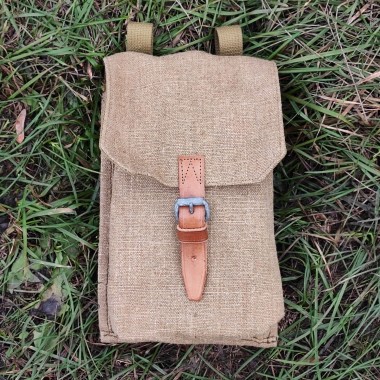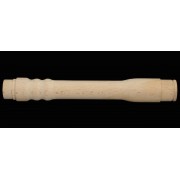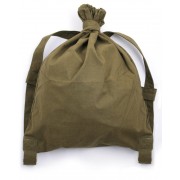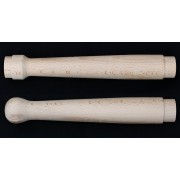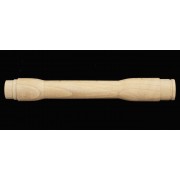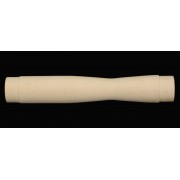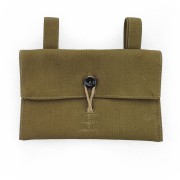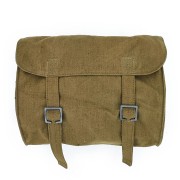Description
The bag is made of thick tarpaulin with a leather strap and a chrome-plated steel buckle. Designed to carry two RGD-33 grenades and fuses to them.
Historical reference.
Bags for such grenades during the war were made of any pieces of fabric of protective color (green, olive, dirty yellow) that were available at the factory, including burlap. The assembly was usually very rough and sloppy, as the best resources were spent on the production of more responsible uniform items. There are a great variety of differences in such bags, only size and layout remained more or less constant.
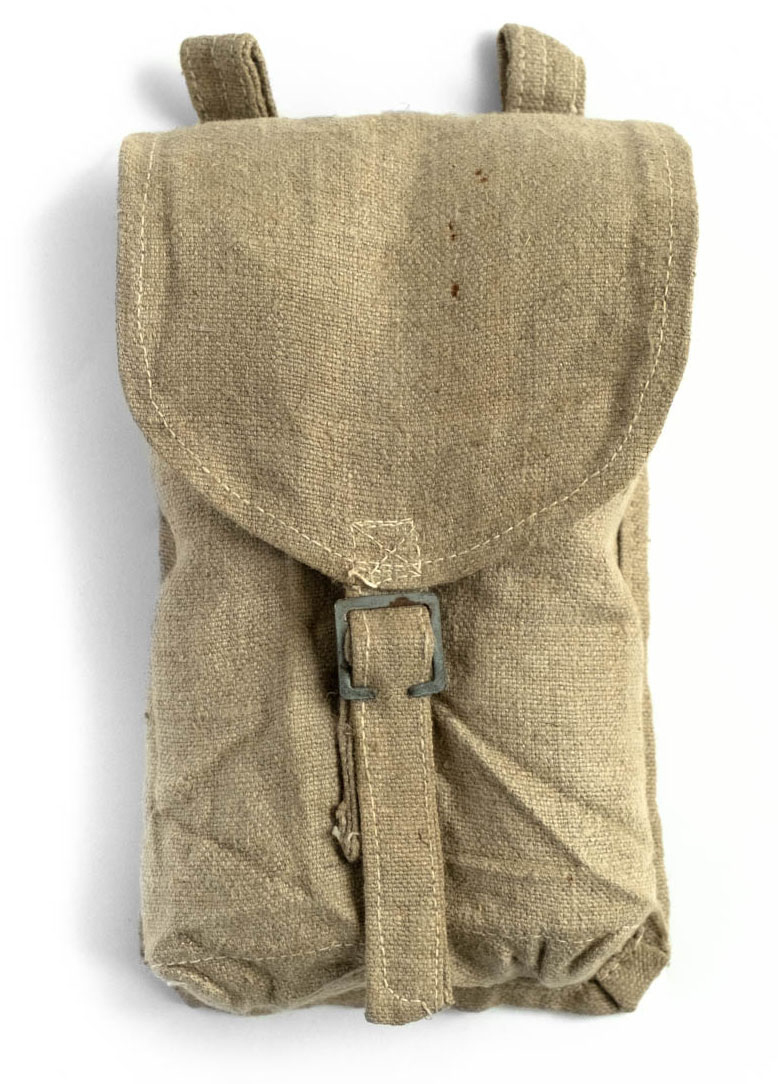
Original bag for grenades RGD-33 (one of many options). Photo: reenact.store.
The RGD-33 grenade was developed as a descendant of the Rdutlovsky grenade from the First World War. The grenade was widespread along with F-1 (Limonka). The grenade was difficult to operate and dangerous when mismanaged. It was necessary to throw the grenade in a jerk so that the action of inertia released the fuse mechanism, and it was difficult to throw the grenade to a window or hatch, where a sharp jerk was not required. Even with the jerk, the inertial fuse was not reliable, so experienced fighters quickly pulled the handle before the throw to ignite the detonator delay, and then quickly threw it... A "pencil" detonator, which could explode from an impact, was a great danger to the fighters. It could hardly kill, but would send a soldier to the infirmary with a part of the body that had been hardened into meat. In 1942, the RG-42 appeared, which repeated the F-1 in principle of action and was simple and clear in use as the F-1. According to unconfirmed reports, RGD-33 was not produced after that.
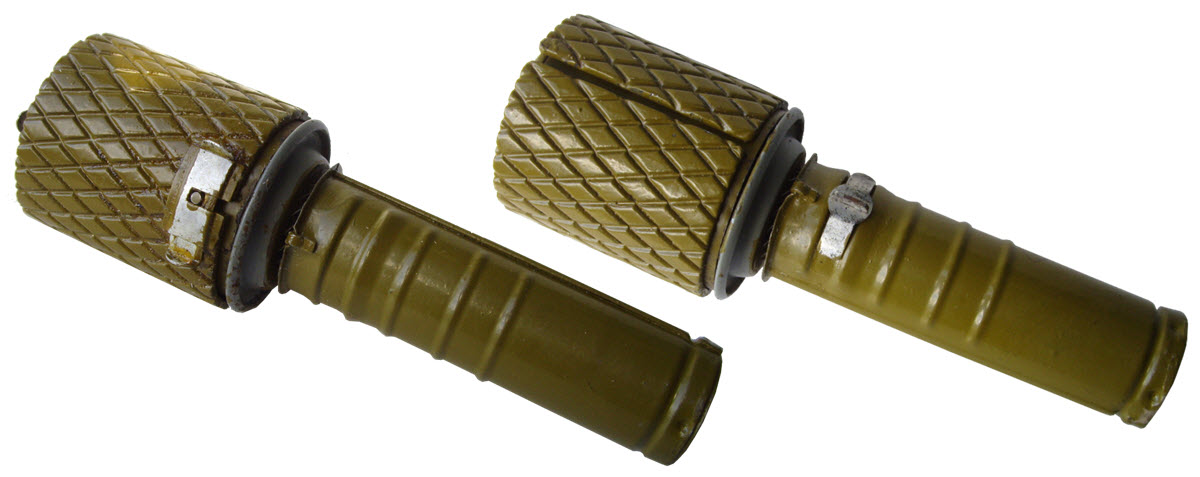
RGD-33 grenade (view from two sides) with a fragmentation shirt on the body. Photo from the site war-time.ru.










